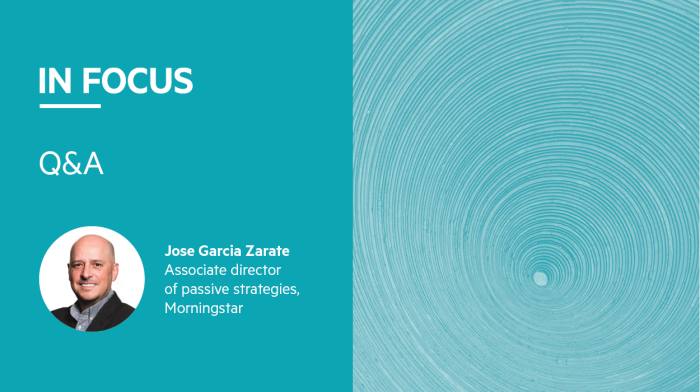
Passive investing offers the benefit of lower cost and as a consequence often higher returns, yet it appeals to some advisers more than it does to others.
While many advisers nowadays buy a mix of passive and active funds, some take a hardline approach, sticking strictly to either of the two.
But is there an ideal approach and to what extent should the cost tail wag the investment dog?
Morningstar's associate director of passive strategies, Jose Garcia Zarate, speaks to FTAdviser In Focus about how fees are a predictor of future performance and why zero-fee funds are unlikely to catch on.
FTA: When it comes to active and passive investing many advisers are choosing to buy while some favour one over the other, is there an 'ideal' approach?
JGZ: I’d struggle to say that there is an ideal approach, as it would be tantamount to saying that all investors are equal.
We have to be mindful of investors’ personal preferences. However, there are some facts that cannot be ignored.
First and foremost, regardless of whether one favours active or passive, fees are a good predictor of future performance. The less one pays on management costs the higher the chances of returns – provided, that is, that we have chosen the right asset mix and the best funds to build such allocation.
Second, for certain market exposures the probability to find active managers who consistently outperform the market is very scant. I’m thinking for example about US equity, where going passive has become something of a no-brainer.
This is not just a question of fees, but of realising that some markets are so efficient that the value of information is marginal and this close to nullifies the chances of successful stock picking with long-lasting results.
FTA: More money is moving into passive funds, so much so that some are warning the passive space could become 'too big' in five to six years' time. What's your assessment of where this is going?
JGZ: The passive fund market is certainly growing very strongly, particularly in the US. But by definition, the passive fund market can only be as big as the available pool of assets for purchase, and these assets are hardly the full size of any given equity or bond market.
Passive funds – exchange traded funds in particular, which trade on real time like a common stock – are built with liquidity as a paramount factor, as otherwise they would not serve their purpose.
FTA: When it comes to impact investing, how do you make an impact as an investor without being actively involved in shaping the companies' policies. Is screening enough?
JGZ: Whether one invests actively or passively, screening is a good first step. Screening is an active decision to carve out the investable universe and exclude certain sectors or companies/countries, which is a strong statement of intent per se.






